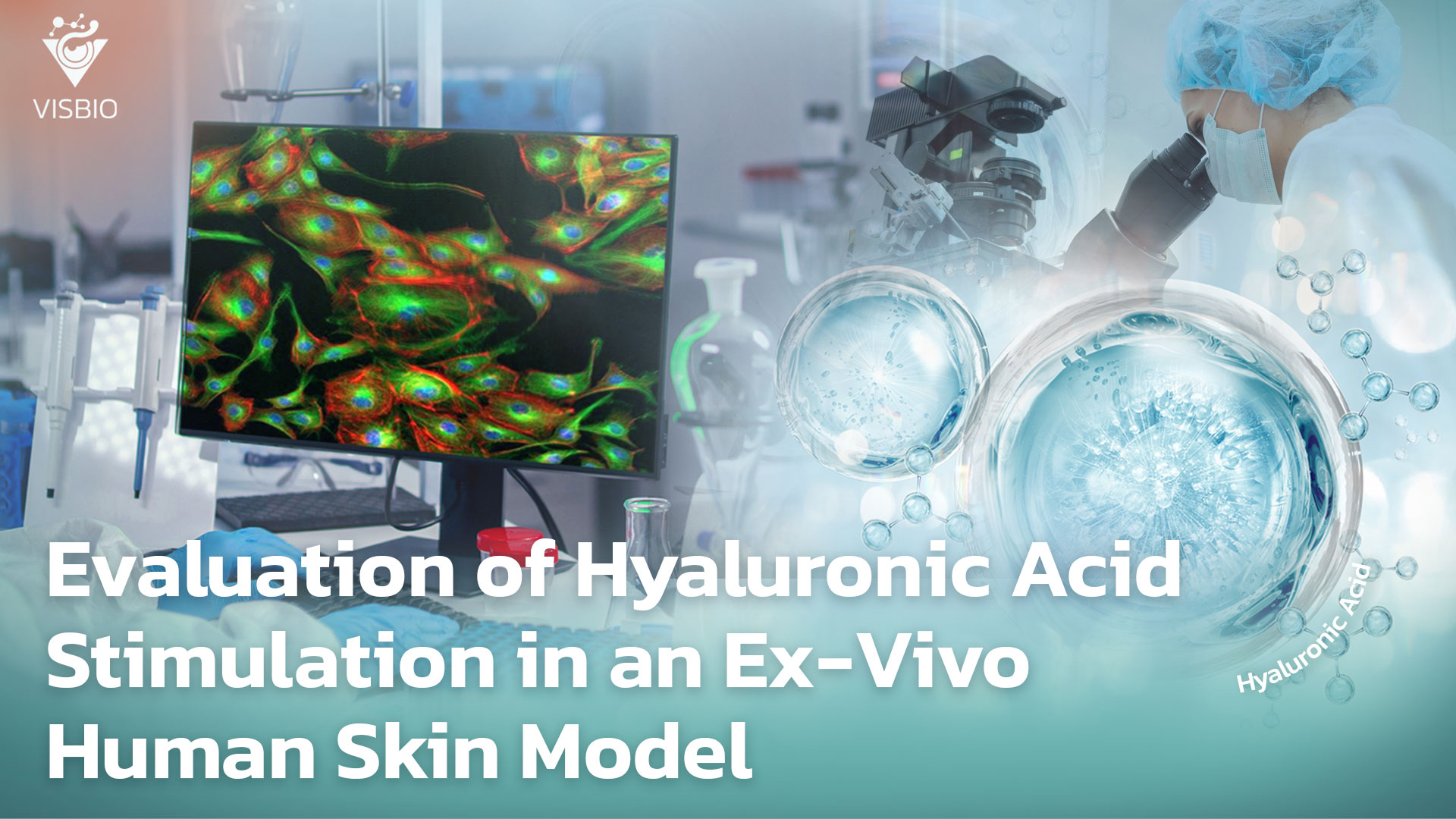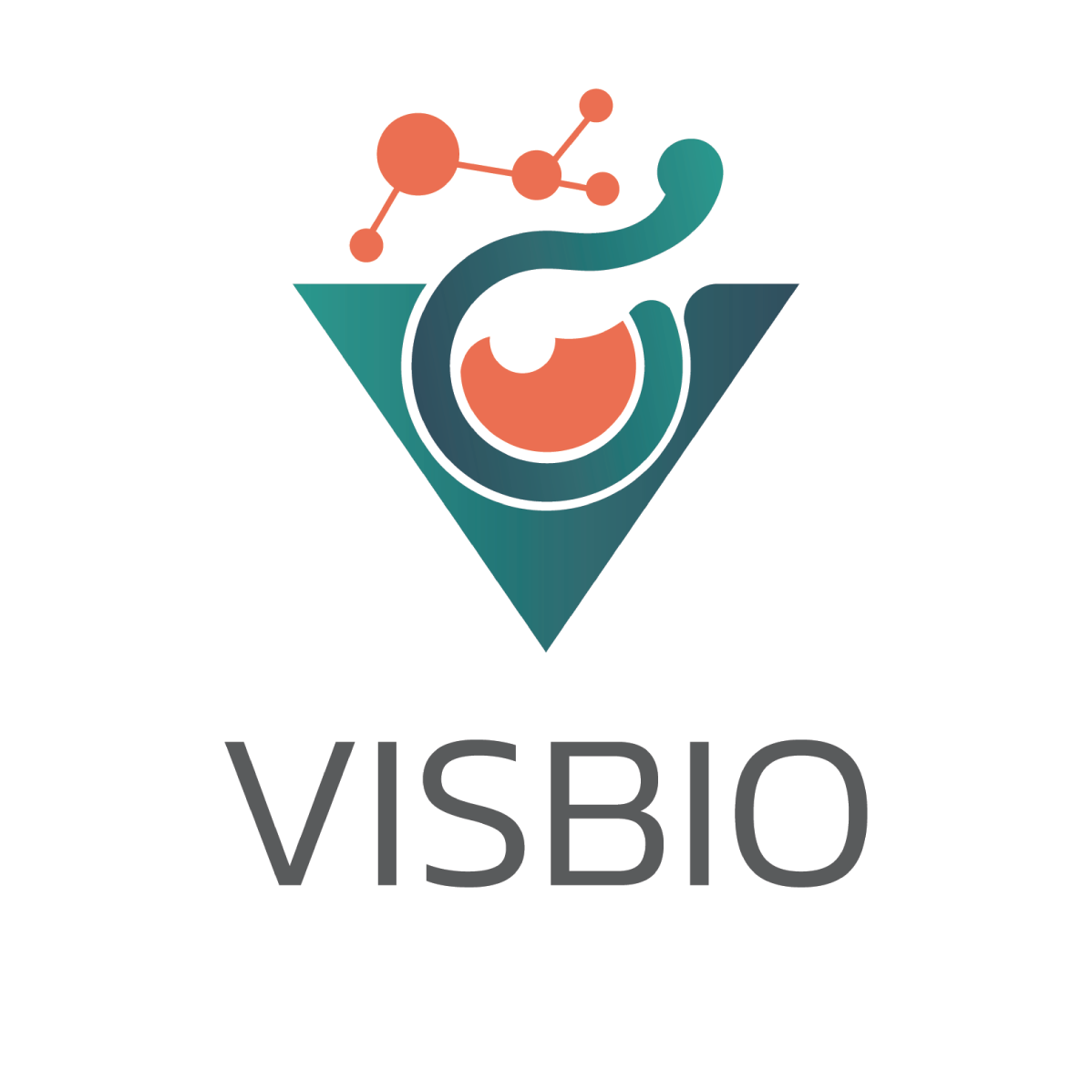
Evaluation of Hyaluronic Acid Stimulation in an Ex-Vivo Human Skin Model
In a highly competitive skincare market with increasing consumer demand for transparent information, establishing product efficacy credibility is paramount. Substantiating claims of ‘hyaluronic acid stimulation’ requires clear scientific evidence. Efficacy assessment using ex-vivo human skin models is therefore a crucial tool for proving product effectiveness.
Ex-vivo testing allows for the evaluation of an active ingredient’s or product’s potential to promote hyaluronic acid synthesis under conditions that mimic human skin. Hyaluronic acid is a vital skin component that plays a role in maintaining moisture, elasticity, and structural integrity. Demonstrating a product’s ability to promote hyaluronic acid production thus adds value and credibility to the product.
This evaluation can be accurately performed using two main recognized scientific techniques:
- Immunofluorescence (IF) Staining Technique: This method utilizes immunological principles to stain hyaluronic acid with fluorescent substances, enabling clear visualization (Localization) of the distribution and relative amount of stimulated hyaluronic acid within different skin layers. This provides qualitative information about where the active ingredient affects skin cell function.
- ELISA (Enzyme-Linked Immunosorbent Assay) Technique: This technique is used for the specific and highly accurate measurement of newly produced hyaluronic acid. It yields quantitative data that can be concretely analyzed and compared to assess product efficacy in stimulating hyaluronic acid production.
Benefits of Ex-Vivo Evaluation:
The application of ex-vivo testing in conjunction with IF and ELISA techniques aids in screening highly effective active ingredients and formulations during the early stages of product development. This can lead to a reduction in risks and costs associated with clinical trials on human volunteers. Furthermore, the scientific data obtained serves as crucial supporting evidence for marketing communications, helping to build product and brand credibility.
The Pivotal Role of Hyaluronic Acid in Skin
Hyaluronic acid (HA), a principal glycosaminoglycan (GAG), constitutes a significant component of the extracellular matrix (ECM) in the skin. HA exerts critical functions in maintaining cutaneous health and appearance.
The exceptional water-retentive capacity of HA is a key factor enabling its efficient hydration of tissues, directly influencing skin turgor, plumpness, and overall elasticity. Beyond its hydrating properties, HA functions as a structural scaffold within the ECM, modulates intercellular signaling pathways, and actively participates in wound healing and tissue repair processes.
The age-related decline in cutaneous HA levels is a major contributor to moisture loss, diminished elasticity, and the formation of wrinkles, hallmarks of chronological skin aging. This phenomenon underscores the importance of investigating and identifying active agents capable of stimulating endogenous HA production or augmenting the benefits of existing cutaneous HA.
Endogenous Hyaluronic Acid: Synthesis, Distribution, and Turnover
Synthesis:
The biosynthesis of HA in the skin is a critical process regulated by a family of enzymes termed Hyaluronan Synthases (HAS), specifically HAS1, HAS2, and HAS3. These enzymes are integral membrane proteins localized to the inner aspect of the plasma membrane.
Distribution in Skin Layers:
HA is distributed throughout both the epidermis and the dermis.
- Epidermis: HA is predominantly found in the intercellular spaces of the basal and stratum spinosum layers, forming a hydrating matrix surrounding keratinocytes. Epidermal HA plays a role in regulating keratinocyte proliferation and differentiation, maintaining tissue hydration, and promoting skin barrier function.
- Dermis: The dermis contains the majority of cutaneous HA, serving as a primary structural component of the ECM synthesized primarily by dermal fibroblasts. Dermal HA is crucial for maintaining tissue hydration, volume, and elasticity, providing a supportive environment for cells and other ECM components such as collagen and elastin.
Molecular Weight (MW) Diversity and Functional Implications
A key aspect of HA biology is its molecular weight, which can range from very large polymers (High Molecular Weight HA, HMW-HA; typically >1000 kDa) to smaller fragments (Low Molecular Weight HA, LMW-HA; <250 kDa and even smaller oligomers). This size diversity is significant, as HA chains of varying lengths can elicit distinct biological responses.
- HMW-HA: Generally exhibits space-filling, structural, and hydrating properties. It tends to be anti-inflammatory and promotes tissue integrity and homeostasis.
- LMW-HA: HA fragments can act as signaling molecules, interacting with cell surface receptors to modulate processes such as cell proliferation, migration, angiogenesis, and inflammation.
Degradation:
The turnover of HA in the skin is a dynamic process involving enzymatic degradation by hyaluronidases (HYALs), such as HYAL1 and HYAL2. These enzymes cleave HA chains into smaller fragments, which are further processed and eliminated. The balance between HA synthesis and degradation is crucial for maintaining optimal HA levels.
Mechanisms of ``Hyaluronic Acid Stimulation``
“Hyaluronic acid stimulation” refers to biological processes leading to an increase in the amount of functional HA in the skin or the enhancement of HA benefits, which can be achieved through several interconnected mechanisms:
- Enhancing HA Synthesis: This is a primary target and involves upregulating the activity of one or more HAS enzymes (HAS1, HAS2, HAS3) in key skin cells such as keratinocytes and fibroblasts.
- Inhibiting HA Degradation: Reducing the activity of hyaluronidases can lead to HA accumulation by slowing down its breakdown.
Impact of HA Stimulation on Skin Health
Beneficial HA stimulation in the skin is associated with several desirable outcomes for skin health:
- Improved Hydration, Turgor, and Elasticity: Increased HA enhances the skin’s ability to retain moisture, leading to skin that feels and appears more hydrated, plump, and supple.
- Reduction of Fine Lines and Wrinkles: By improving skin volume and hydration, increased HA can help diminish the appearance of fine lines and wrinkles.
- Strengthened Skin Barrier Function: Adequate HA levels in the epidermis contribute to a stronger and more resilient skin barrier, reducing transepidermal water loss (TEWL).
- Support for Tissue Repair and Regeneration: HA plays a critical role in all phases of wound healing, promoting cell migration and proliferation, and modulating inflammation.
Ex-Vivo Human Skin Model
The ex-vivo human skin model has become an invaluable tool in dermatological research, particularly for assessing the efficacy of active agents or finished products. Its high physiological relevance, achieved by preserving the inherent complexity of human skin structure, is a significant advantage.
Furthermore, the use of ex-vivo human skin models circumvents ethical concerns associated with animal testing. Animal skin is known to differ significantly from human skin in terms of microanatomy and physiology. The ability to apply test substances topically or via injection allows for the evaluation of compound penetration and the induction of localized biological responses within the human tissue matrix, closely mimicking clinical use scenarios. Therefore, the ex-vivo model is particularly well-suited for evaluating the efficacy of substances aimed at stimulating HA.
Immunofluorescence (IF)
Immunofluorescence (IF) is a widely employed histopathological technique that enables the specific detection and localization of target antigens (biomolecules) within tissue sections using fluorescently labeled antibodies (fluorochromes). Its application in dermatopathology and skin research is extensive, serving as a visualization method to assess alterations in protein expression, ECM components, and cellular states. For evaluating HA stimulation, IF offers the unique capability to visualize not only HA itself but also the enzymes responsible for its synthesis (Hyaluronan Synthases, HAS) and key cellular receptors involved in HA signaling.
Hyaluronic Acid ELISA Kit Test
Hyaluronic Acid (HA) is a biomolecule that plays a crucial role in the body, especially in maintaining skin hydration and elasticity. For this reason, measuring the quantity of HA in various samples is important in both medical research and the cosmetics industry. The Hyaluronic Acid ELISA Kit is a tool developed to meet this need, utilizing a technique called “Competitive Enzyme Immunoassay.”
The intensity of the color is measured using a microplate reader at a wavelength of 450 nm. The Optical Density (O.D.) value obtained from the sample is compared to a standard curve, which is created by testing HA solutions of known concentrations using the same process. From this, the concentration and quantity of HA present in the sample can then be calculated.
Evaluation of Hyaluronic Acid Stimulation in Ex-Vivo Human Skin Model: Suitable Product Examples
Hyaluronic Acid (HA) is a key component of the skin contributing to hydration, elasticity, and plumpness. The skin’s ability to efficiently produce HA is crucial, especially in tropical climates where skin can easily lose moisture. Therefore, testing to evaluate a product’s ability to stimulate HA production is essential.
Examples of Products, Active Ingredients, and Medicines (for Tropical Use) Suitable for This Testing:
1.Products:
- Hydrating and Anti-wrinkle products: Focused on restoring skin HA levels for plumpness and wrinkle reduction.
- Serums/Creams for dry, dehydrated skin: Evaluating their effectiveness in stimulating the skin’s own HA production.
- Skin recovery products after sun/pollution exposure: Helping to strengthen and maintain moisture in damaged skin.
2.Active Ingredients:
- Specific Peptides: Certain peptides are designed to signal skin cells (Fibroblasts) to produce more HA.
- Plant Extracts: Some tropical plant extracts are reported to stimulate HA synthesis.
- Vitamins and Derivatives: E.g., Vitamin C, which indirectly supports skin structure and collagen synthesis, potentially creating an environment conducive to HA production.
- Other proven hydrating agents: Substances that work through mechanisms stimulating enzymes involved in HA synthesis.
3.Topical Medicine
Literature:
- Zhou, R., & Yu, M. (2025). The Effect of Local Hyaluronic Acid Injection on Skin Aging: A Systematic Review and Meta-Analysis. J Cosmet Dermatol, 24(1), e16760.
- Juncan, A. M., Moișă, D. G., Santini, A., Morgovan, C., Rus, L.-L., Vonica-Țincu, A. L., & Loghin, F. (2021). Advantages of Hyaluronic Acid and Its Combination with Other Bioactive Ingredients in Cosmeceuticals. Molecules, 26(15), 4429.
- Shetty, V. M., Subramaniam, K., & Rao, R. (2017). Utility of immunofluorescence in dermatology. Indian Dermatol Online J, 8(1), 1-8.
- Im, K., Mareninov, S., Palma Diaz, M. F., & Yong, W. H. (2019). An Introduction to Performing Immunofluorescence Staining. Methods in Molecular Biology, 1897, 299-311.

